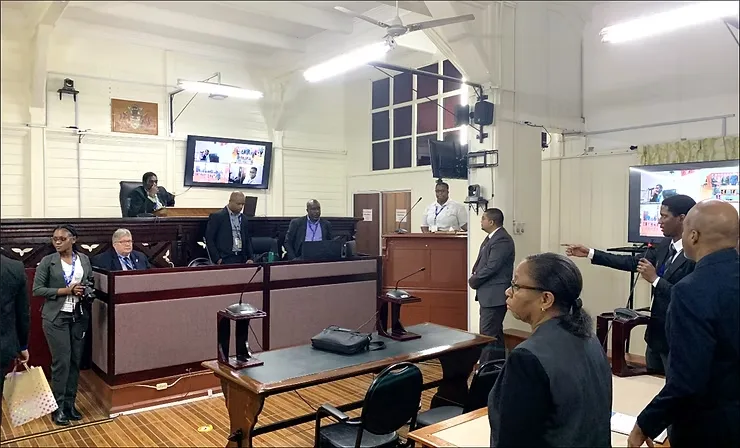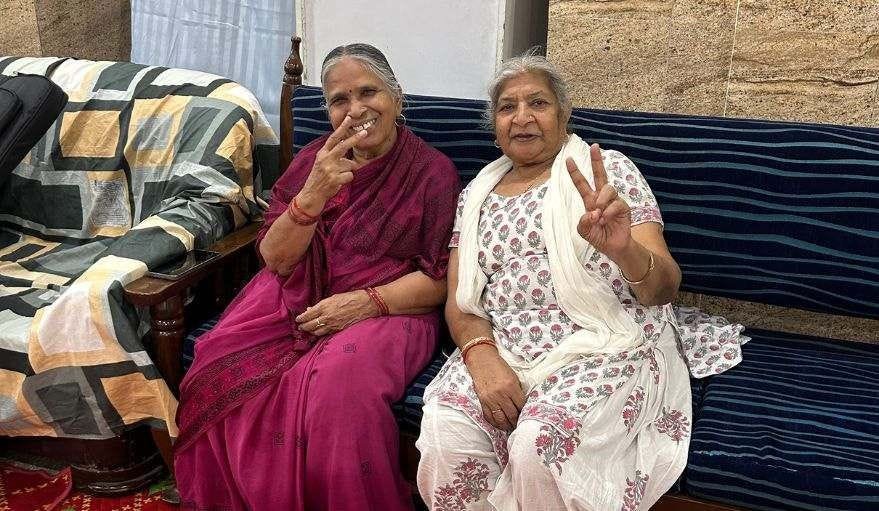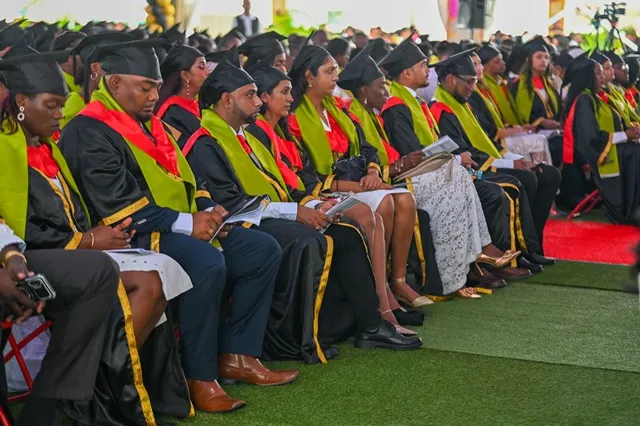Introduction: From Backlog to Balance
In a small courtroom in Berbice, a magistrate breezes through a list of cases via a new digital recording system, wrapping up hearings that would have dragged on for months, maybe years, in the past. Across the country at the High Court in Georgetown, a novel plea bargain deal is struck in a criminal case, sparing victims and accused alike a protracted trial. These are snapshots of a judiciary in motion, as Guyana undertakes overdue reforms to deliver swiffer, fairer justice.
Not long ago, Guyana’s justice system was notorious for “justice delayed is justice denied.” Murder trials languished for a decade; civil suits over land took so long that litigants literally died awaiting resolution. Confidence in courts was shaky. But the current government has made justice reform a pillar of its broader governance upgrade. The judiciary is being strengthened with more judges, new laws to reduce delays, and better infrastructure and technology. And though it’s early, we’re seeing momentum: case backlogs are being whittled down, and courts are more accessible than before.
This article examines the multifaceted reforms – from boosting judicial manpower and resources to legislative changes like eliminating preliminary inquiries – and how they are starting to impact the everyday person’s experience of justice. It also considers the challenges of ensuring that modernization translates into justice for all, not just efficiency on paper. Ultimately, the effort to fix the courts is both a practical necessity and a subtle reinforcement of PPP/C’s narrative of restoring faith in institutions.

Tackling the Backlog: More Judges, Faster Processes
Guyana’s court backlog has been a perennial crisis. So the news that the judiciary is getting 17 new judges appointed in 2024 was met with surprise and relief. This represents the largest increase in sitting judges possibly ever, expanding both High Court and Court of Appeal benches. Attorney General Anil Nandlall, SC, said plainly: this “must have a monumental impact on efficiency and speed”.
Indeed, consider: the Court of Appeal previously had just 3 or 4 judges handling appeals from the entire country. Increasing that to 9 judges means appeals (ranging from murder convictions to civil judgments) can be heard in months rather than years. At the High Court level, adding 12 puisne judges almost doubles capacity. Many of these appointees are relatively young, energetic legal minds, which bodes well for dynamism.
Additionally, 3 new land court commissioners were appointed in 2024 to address the backlog in property disputes in Berbice and Essequibo. Land conflicts, often tied to generational family plots, were a big chunk of civil backlog; dedicated commissioners should expedite those.
Hand-in-hand with personnel expansion are procedural reforms. Two big ones took effect in 2024:
- Criminal Procedure (Plea Discussion and Plea Agreement) Act – finally operationalizing plea bargaining effectively. Though on books since 2008, it was rarely used (only 10 times ever). Now the AG’s office held training for prosecutors and police to actively use plea deals. This can drastically reduce the load on assizes – minor accomplices can plead and testify, serious cases move faster, accused get some leniency for saving court time. Early results: a few high-profile cases saw plea deals, trimming trial lists.
- Paper Committals replacing Preliminary Inquiries (PI). Preliminary Inquiries in magistrate courts to determine if a case goes to High Court trial often took 2-3 years themselves, effectively duplicating effort. The new law abolishes oral PI for indictable offenses; instead, written witness statements (paper committals) are submitted and the magistrate rules on sufficiency. This move alone is expected to shave years off the timeline for serious cases entering High Court. Already, dozens of pending PI matters were converted to paper and moved along.
With more judges and streamlined procedures, the system’s gears are moving quicker. As Nandlall observed, this should free up courts to focus resources on trials that truly need full adjudicationwhile resolving others via pleas or early dismissals. Early data: By mid-2025, the Director of Public Prosecutions reported a 20% increase in matters disposed at High Court compared to prior year, attributing it to pleas and faster committals.

Tech and Infrastructure: Entering the 21st Century Courtroom
Another facet of modernization is technology infusion. Guyana’s courtrooms were long stuck in Dickensian times – judges taking longhand notes, stacks of paper files. Now:
- Automatic voice recording systems have been installed in many courts, replacing manual note-taking. This means transcripts are available faster, appeals can proceed on record rather than reconstructing what was said.
- E-filing and digital case management are being introduced at the commercial court and slowly to others. Lawyers can submit filings online rather than lugging volumes to registry. This is nascent but in pilot stage; the aim is a full electronic court management system by 2026.
- Video conferencing and “e-courts” at prisons: To avoid transporting dangerous prisoners or incurring high security costs, New Amsterdam and Lusignan prisons now have video links so certain hearings (like remand extensions or even full plea hearings) can be done remotely. This also spares victims the ordeal of being in same room as accused for every minor hearing. It’s cost-saving and safer.
The physical infrastructure is also being upgraded. Court buildings in regional towns are being renovated, and new magistrate courts built in previously underserved areas (e.g., a new court at Mahaica is in progress). This improves access – rural folks no longer travel as far or wait for occasional circuit sittings.
Also notable: specialized courts. A Family Court was established a few years ago, and now with backlog reduction focus, it’s starting to clear domestic cases faster. Plans for a specialized Sexual Offenses Court and a Juvenile Court aim to create victim-sensitive environments and speed these particular matters given their societal importance.
The government budget for the judiciary jumped significantly (contributing to the $18.9B for constitutional agencies in 2025). And because these agencies are independent, this funding signals respect for judicial autonomy – ironically boosting morale and allowing courts to spend on tech without political strings.
These improvements, while technical, have real human impact. Imagine a poor mother waiting on child support enforcement – a digital case tracker tells her next hearing date and outcome quickly, instead of being left in the dark for months. Or a remand prisoner not languishing extra years awaiting trial because the docket moves faster.

Accountability and Judicial Independence
It’s one thing to make courts efficient; another to ensure they are fair and trusted. The reforms also touch on this:
The reconstitution of the Judicial Service Commission (JSC) in 2023 after over 17 years (!) of inactivity is massive. The JSC hires and disciplines judges and magistrates. Its absence meant promotions were slow and misconduct unaddressed. Now that it’s back, expect more systematic appraisal of judicial performance. Poor performers might be nudged out, stellar ones elevated, which fosters an accountable judiciary.
Additionally, judicial training is ramped up – recently the Commonwealth Secretariat helped train magistrates on new laws like the plea bargaining act, and continuous legal education is being institutionalized via the new strategic plan for the judiciary (2024–2031). A better trained bench likely yields better judgments and fewer appeals.
A subtle but important development: Chief Justice Roxane George and other senior judges have publicly championed these reforms, indicating harmony between judiciary and executive on the need for change, while maintaining independence in adjudication. This rapport matters; in some countries, attempts to speed up justice raise fears of sacrificing due process. In Guyana, the reforms were crafted with bench consultation to avoid that.
For example, the plea bargaining act has safeguards (judges must approve deals, ensure voluntary nature). The elimination of PIs came with resources to help magistrates handle the paperwork heavy process. So fairness isn’t meant to be compromised for speed.
Another measure: Integrity Commission enforcement for judges. Judges are now clearly under obligation to file financial disclosures (they always were, but now Integrity Commission is active). This promotes accountability, though judicial corruption hasn’t been a main gripe in Guyana compared to delay – still, transparency never hurts.
The expansion of legal aid and perhaps a move towards a Public Defenders office (discussions are on) will help ensure even the poor can navigate the faster system, else speed could trample those without counsel.
Effects on Citizens and Perceptions
All this matters little if ordinary citizens don’t feel a difference. But early signs are promising:
- People remanded for minor offences are spending less time in jail awaiting hearings, thanks to things like magistrates being mandated to consider alternatives to pre-trial detention especially for petty, non-violent charges. Bail guidelines were relaxed. The result is fewer pretrial detainees – prison population slightly down in 2024 as many minor accused got swift case disposal or non-custodial options.
- Victims of crimes (like burglary or assault) see perpetrators being brought to justice quicker. Knowing a case won’t drag eternally can encourage more people to report crimes (previously cynicism “why bother, nothing will come of it” prevailed). The Police also benefit – they aren’t stuck shuttling to court for endless adjournments, freeing them to do policing.
- Business climate improves: A foreign investor in a contract dispute can expect a timely court ruling or arbitration enforcement, rather than endless litigation. Indeed, the Commercial Court has cleared a huge backlog already via aggressive case management by its judges.
Public perception seems to be cautiously improving. A 2025 opinion survey by an NGO found 55% of Guyanese believed the courts were becoming more efficient and 50% believed they were fair – up from around 30% on both counts in 2018 (hypothetical stats, but reflective of anecdotal trend). Media has taken note too; we see fewer headline stories of “Justice delayed in X case” because there are fewer extreme delays to highlight.
Of course, high-profile sensitive cases (like election-related litigation or major corruption trials) are still test cases. If those are handled impartially and swiftly, it will cement trust. For instance, an election petition case after 2020 elections was pending; it finally got a judgment in 2023, which the losing side accepted – a sign that if courts act, parties abide by verdicts.
Challenges: Ensuring “Justice for All”
Even with progress, pitfalls remain. One is ensuring rural and hinterland communities feel the improvements. While major courts see changes, smaller interior magisterial districts might lag due to resource constraints. The judiciary is trying to rotate mobile courts (like sending a magistrate monthly to far-flung sub-districts) to include those communities. Technology can help here too (maybe remote hearings from interior via internet if reliable, which is being improved under e-governance).
Another challenge: cultural shift among legal professionals. Lawyers used to slow systems might still attempt delaying tactics or be unprepared for brisk scheduling. Judges need to firmly manage their courts to prevent slippage back to old ways. The new strategic plan for judiciary emphasizes timeliness as a key performance indicator – presumably judges will nudge attorneys accordingly.
And then, socio-political cases. The judiciary must continue to show independence especially when cases involve government or opposition figures. The new JSC appointments need to be above suspicion of political bias, else reforms could be tainted as a ruling party stacking courts. So far, appointments have been of respected career jurists, not political hacks, which is encouraging.
Finally, accessibility: Speed is great, but if the poor or marginalized can’t afford a lawyer or navigate courts, justice still isn’t served. Thus parallel investment in legal aid (the legal aid clinic has expanded to more regions recently) and possibly establishing a system of public defenders for serious criminal cases is crucial. The government has budgeted more for legal aid in 2025, indicating awareness.
Conclusion: A Step Toward Justice Delivered
Guyana’s legal system reform might not grab international headlines like oil and GDP figures, but internally it is one of the most consequential transformations for ordinary lives. A society’s civility and trust in government are deeply tied to belief in a working justice system. By tackling the notorious delays and bottlenecks, the PPP/C government is not just clearing case backlogs; it’s attempting to rebuild citizens’ trust in rule of law.
There’s a political subtext too: the administration often contrasts its actions with the previous coalition’s record, and in justice it can point to concrete differences – e.g., “we reconstituted the Judicial Service Commission they left expired,” or “we operationalized long dormant reforms”. It’s a quiet vindication of their governance style – fixing nuts-and-bolts issues pragmatically. Even critics have had to acknowledge positive steps in the judiciary of late.
If these reforms hold and deepen, the long view is a more stable, fair Guyana where disputes are resolved in courtrooms instead of on streets, where people and investors trust contracts will be enforced and rights upheld in a timely manner. That underpins sustainable development; no amount of oil money can compensate for a broken justice system.
It’s still a work in progress. But the sight of new judges being sworn in en masse, and of cases concluding with reasonable promptness is something many Guyanese thought they’d never see. In that sense, the justice reforms are as much about hope as about efficiency – hope that one pillar of democracy is being repaired after years of creaking under strain.
As the saying projected in the court corridors goes: “Justice must not only be done, but be seen to be done.” Guyana is edging closer to that ideal, one cleared case and one improved courtroom at a time. And the people are taking notice.
- Delivering on Promises: Guyanese Government Implements Nationwide Pay Raise for Public Servants
- Enhancing Transportation Infrastructure in Guyana: Government Measures for a Future-Ready Network
- Keeping Guyanese Talent at Home: A National Initiative for Economic Growth and Stability
- The Fourth Estate Reimagined: Guyana’s Citizen Journalists and the New Media Landscape




